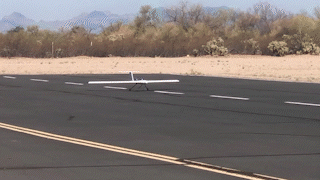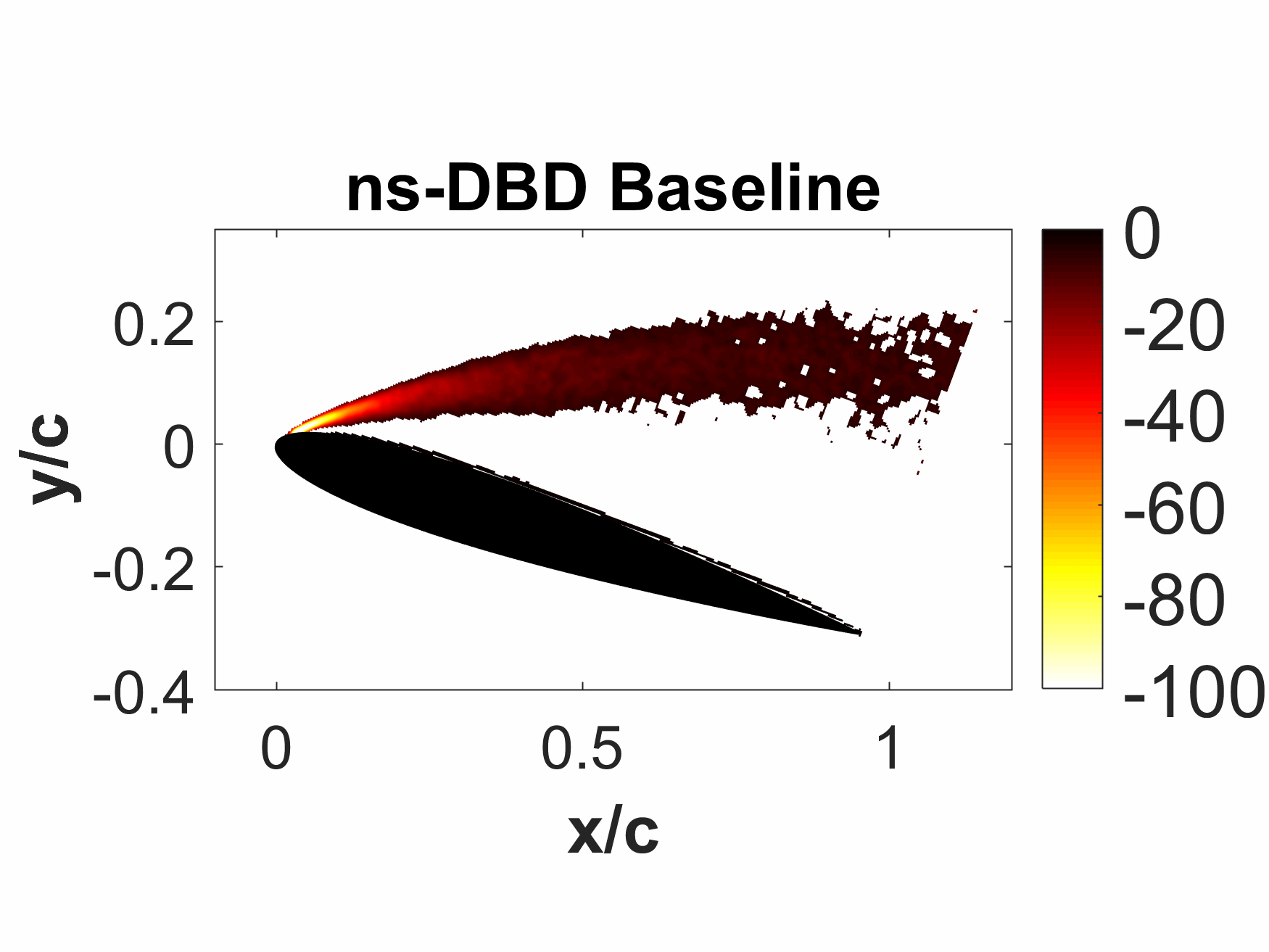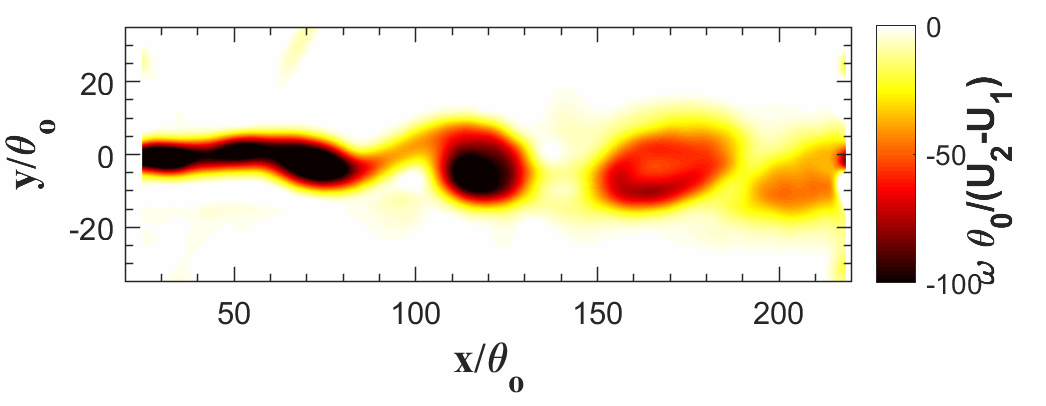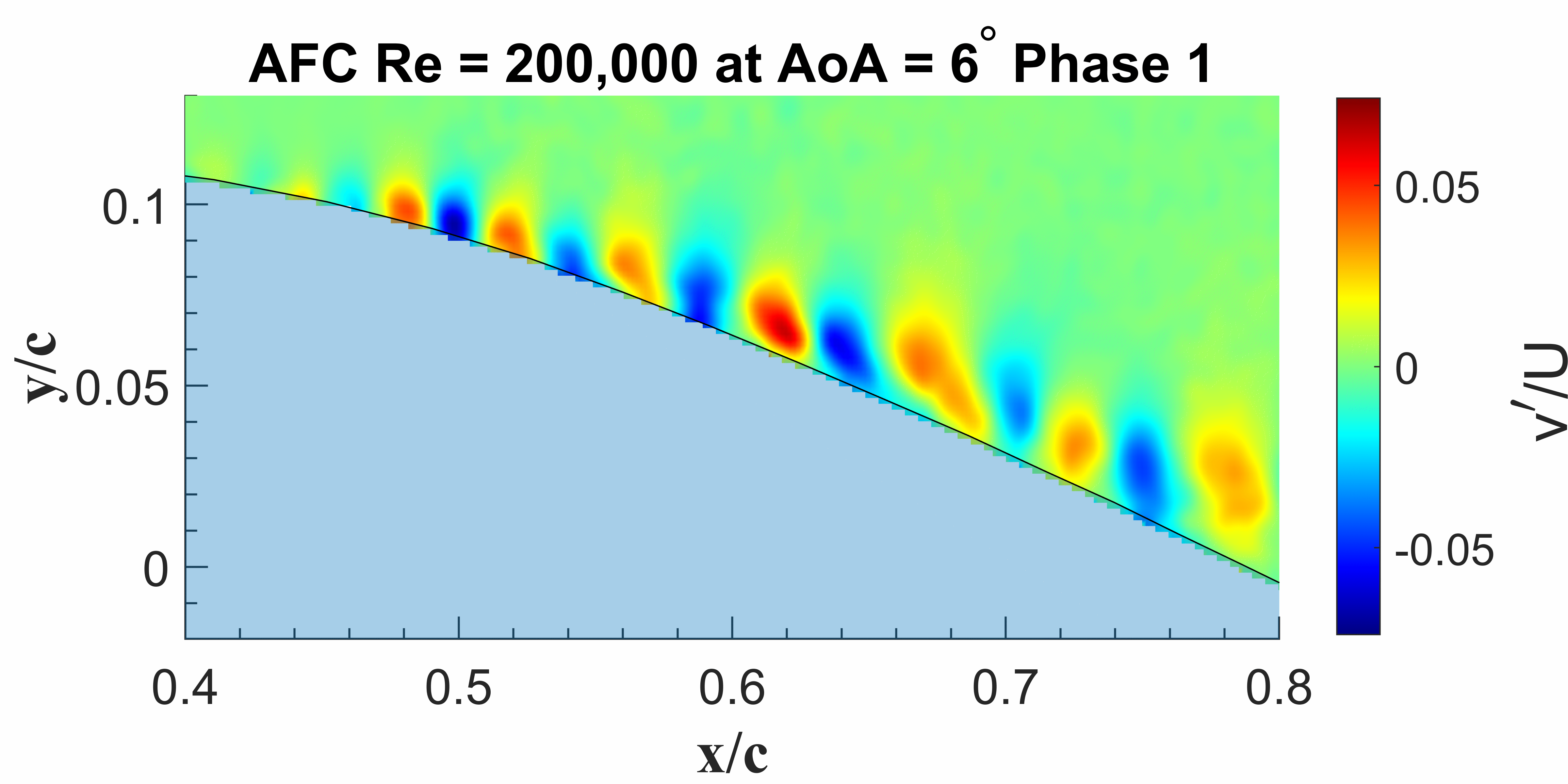Projects
Structural Motion and Transition in Laminar Airfoils

This modified X-56A aircraft designed and constructed in house uses a modular design to accommodate swept and unswept wings. An array of flight instrumentation – hot-wire anemometry, pressure transducers, IR-thermal camera etc. – were implemented to record in-flight data of transition and separation for different flight speeds. Prelimanry flight tests yielded good agreement with wind tunnel transition data at the same Reynolds numbers. IR thermography and mean static pressure measurements were used to study and compare the formation of laminar separtion bubbles and how its affected by free stream turbulence. Research is ongoing to conduct more flight tests in under varied flight conditions.
Transient Separation Control

The use of ns-DBD plasma actuation for separation control has been demonstrated for a broad range of Reynolds numbers. To highlight this process, a pulsed operation is analyzed at various time periods after actuation. The effect of a single pulse is shown in the gif above. The vorticity field shows how the leading edge shear layer is severed and the formation of two vortex structures, one of which attaches to the airfoil and mitigates stall.
This investigation shed light on the dynamics of the separation control process and highlighted the high efficiency of ns-DBD actuation for controlling separated flows. This work led to the publication of one conference and one journal paper.
Mixing Layer

Ns-DBD plasma actuators have been successful in controlling high speed flows, but the complex flow physics is still obscure. By studying these actuators in a simplified and well-understood flow geometry, such as a mixing layer, I aim to deduce scaling arguments with respect to the base flow parameters (e.g. inital momentum thickness).
The gif above is the effect of these actuators on the vorticity field in a mixing layer flow. The flow is from left to right and the actuator is located at the origin. The process of vortex roll-up and the roller-braid behavior is seen here. The study shed light on the roll of actuation parameters and put forth a mechansim behind the formation of structures seen in the gif above. This study has resulted in the publication of two conference and two journal papers (one in review).
Ns-DBD Plasma Actuators

This plasma-based device is constructed by sandwiching a layer of dielectric material (such as Kapton) between two metallic strips (such as copper tape). On applying a short nanoscale DC pulse, the dielectric barrier breaks down and the air is ionized into a diffuse plasma. This is hypothesized to created a sharp increase in local temperature and pressure which amplifies instabilies present in the flow field. Through this mechanism, these actuators are able to manipulate high speed flows, such as prevent stall on airfoils, reduce vibrations in buff bodies, reduce drag etc.
Laminar Separation Bubble Control

Recent trends in aircraft industry towards composite materials has led to high aspect ratio wings with low induced drag. However, due to this large aspect ratio, unsteady wing loading resulting from unsteady winds, gusts or turbulence is a major problem. Structural motion can affect boundary layer transition and separation especially over laminar airfoils. Hence, a fundamental understanding of the flow under structural motion is needed to address these problems
In the current project plasma actuation is used to study the underlying instability as well as modify the response over the surface of the airfoil. A modified laminar airfoil at Re 200k is used in the experiments in the ALSWT facility. This work if funded by AFOSR.